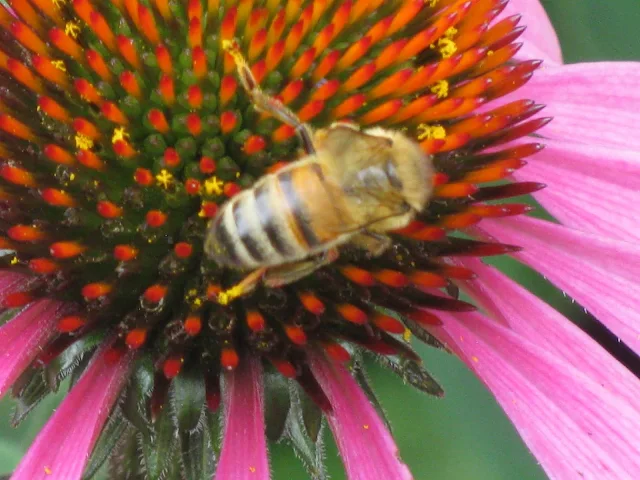Everything is the best ever this summer; I am referring to the garden. I have never seen the garden so full of flowers as this year; I keep saying to my wife that it is paradise out there, it is the Garden of Eden.
The Canadian author, W.P. Kinsella, who wrote Shoeless Joe, from which the film Field of Dreams was adapted, wrote something like, "if you build it, they will come." Of course, it is true, including in gardening. If you want birds to visit your garden, have a bird feeder; better yet also have a bird bath with clean water in it every day. If you want insects, butterflies, bumble bees, honey bees, have a lot of flowers and the insects will come. If you want life, then plan ahead and make your backyard inviting for living beings.
Your backyard, which was barren, just a lot of half dead grass and dirt, desolate and uninviting, can be transformed into a place that is full of life and activity, as I have done with our backyard. Yesterday, I sat in our backyard with my son who was visiting; right away he knew it was a cottage garden that I had aimed for (he hadn't visited for almost two years due to Covid-19). The work I put in for the last five or more years was finally evident. You can transform just about any piece of land into your own Garden of Eden. If you work on it, flowers will grow, the birds and insects will return. Even urban wildlife will stop by and visit; in the middle of last night I woke up to the smell of a skunk, but there are other nocturnal animals making their way through the garden, including raccoons and ground hogs.
Here are some photographs taken this week of honey bees on echinacea flowers, cone flowers, that I planted a few years ago. Having been a beekeeper many years ago I always love to see honey bees in the garden, not because they are important pollinators, which they are, but because I have a lot of affection for honey bees; they're busy working, they won't sting you, it is live and let live in this life.
 |
| Notice the bee's back legs, the pollen sacs are for collecting pollen which is protein for honey bees |






No comments:
Post a Comment